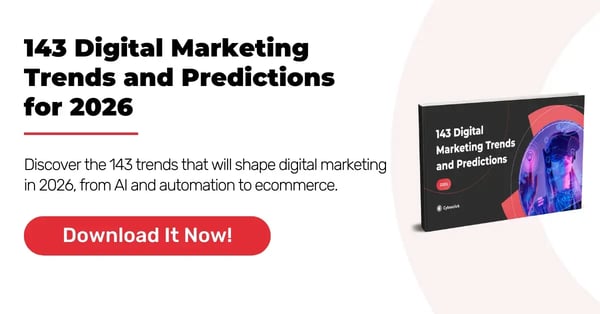Creating content that reaches the right audience is every marketer’s goal. It’s not enough for content to be visually appealing or well-written, it must also be relevant and discoverable. Even with a strong lead magnet or data capture offer, content that doesn’t connect with search intent or social media algorithms may fail to drive meaningful traffic or conversions.
This is where content pillars come into play. Content pillars help organize your messaging, improve search visibility, and make sure that both audiences and algorithms recognize your authority in your niche.

What Are Content Pillars?
Content pillars are the main ideas around which all your content is built. They include broad, high-value topics that reflect your brand’s expertise, values, and offerings. Rather than focusing on every possible keyword, content pillars allow you to concentrate on topics that truly resonate with your audience and tie into your SEO strategy.
A strong content pillar acts as a central hub that has related content—blogs, social media posts, videos, or guides—clustered around it. The goal is to cover each topic in depth, demonstrating authority and creating a network of internally linked pieces of content that signals expertise to both humans and search engines.
Why Are Content Pillars Important?
Content pillars are essential because no single piece of content can cover every keyword or question that your audience might have. By focusing on core topics, you can:
- Build brand authority in your niche.
- Drive organic traffic through targeted SEO.
- Engage audiences with relevant and consistent content.
- Support conversion-focused strategies.
- Strengthen your internal linking structure.
- Align with Google’s E-E-A-T (experience, expertise, authoritativeness, trustworthiness) guidelines.
- Attract high-quality backlinks.
- Maintain a cohesive brand voice.
In short, content pillars create a framework that amplifies the impact of your marketing efforts across all channels.
Content Pillars vs. Topic Clusters
It’s common to confuse content pillars with topic clusters (sometimes called the hub-and-spoke model). A content pillar represents the central theme, while topic clusters are the sub-topics or supporting content that link back to the pillar.
For example, if a home decor brand chooses “Sustainable Interior Design” as a content pillar, topic clusters could include:
- “Eco-Friendly Furniture Materials”
- “Budget-Friendly Sustainable Decor Ideas”
- “How to Reduce Waste in Home Renovation”
Each of these supporting articles links back to the pillar page, creating a cohesive content ecosystem that improves both SEO and user experience.
How to Create Content Pillars
Creating content pillars begins with understanding your audience and their pain points. Buyer personas are invaluable here. If you haven’t developed them yet, start researching. Look at what your top-performing content is, which posts generate the most engagement, and which channels drive traffic.
Follow these steps to guide your content pillar strategy:
- Audit Existing Content. Identify posts that can be updated or repurposed as pillar content.
- Conduct Keyword Research. Focus on high-value keywords with strong search intent, considering search volume and difficulty.
- Select Your Core Pillars. Limit to 3–4 topics to avoid diluting focus.
- Define Topic Clusters. Identify relevant sub-topics or supporting content that will feed into each pillar.
- Internal Linking Strategy. Connect related content to strengthen authority and improve navigation.
- Brainstorm and Refine. Involve the whole team to bring diverse perspectives and generate fresh ideas.
Using AI to Support Content Pillars
AI tools like ChatGPT, Claude, or Perplexity can assist with content ideation and brainstorming. They are especially helpful if you’re experiencing writer’s block or want to explore various creative angles.
To leverage AI effectively:
- Start with a clear premise. Define the purpose of the content brainstorm.
- Use modifiers to mix things up. Adding words like ‘unusual,’ ‘creative,’ or ‘practical’ to your request—like asking for ‘10 unusual ideas’ or ‘10 creative angles’—helps spark fresh thinking and variety.
- Explore different perspectives. For example, explore ideas from a customer’s point of view.
- Consider all channels. AI can suggest content for blogs, social media, or email campaigns.
- Generate drafts for refinement. Let AI provide a first draft, but maintain the human touch and brand voice in the final version by rereading and editing each piece of content generated.
Remember, AI should be used as a tool for organizing ideas and boosting creativity, not as a replacement for thoughtful content creation.
Real-World Examples of Content Pillars
Ahrefs
Content Pillars: SEO, Marketing
Ahrefs is a popular SEO tool provider that has built its content strategy around educating users on best SEO practices. Their content pillars include in-depth tutorials on topics like link building, keyword research, and SEO strategies.
By offering valuable educational content, Ahrefs not only helps users improve their SEO skills but also showcases the effectiveness of their own tools, driving both engagement and conversions.

Buffer
Content Pillars: Social Media Marketing, Social Media Insights, Creator Marketing, AI
Buffer is a social media management tool that has structured its content around helping businesses grow through effective social media marketing. Its content pillars include topics like social media strategies, small business growth tips, and podcasting.
By providing actionable insights and resources, Buffer supports its audience when it comes to navigating the complexities of social media marketing.

Conclusion
Content pillars are the backbone of an effective content marketing strategy. By focusing on key themes, supporting sub-topics, and leveraging AI thoughtfully, businesses can improve search visibility, audience engagement, and brand authority.
If you invest the time to identify pillars that reflect your expertise and resonate with your audience, your content strategy will have a strong, organized foundation for long-term success.
CEO y cofundador de Cyberclick. Cuenta con más de 25 años de experiencia en el mundo online. Es ingeniero y cursó un programa de Entrepreneurship en MIT, Massachusetts Institute of Technology. En 2012 fue nombrado uno de los 20 emprendedores más influyentes en España, menores de 40 años, según la Global Entrepreneurship Week 2012 e IESE. Autor de "La empresa más feliz del mundo" y "Diario de un Millennial".
CEO and co-founder of Cyberclick. David Tomas has more than 25 years of experience in the online world. He is an engineer and completed an Entrepreneurship program at MIT, Massachusetts Institute of Technology. In 2012 he was named one of the 20 most influential entrepreneurs in Spain, under the age of 40, according to Global Entrepreneurship Week 2012 and IESE. Author of "The Happiest Company in the World" and "Diary of a Millennial".






Leave your comment and join the conversation